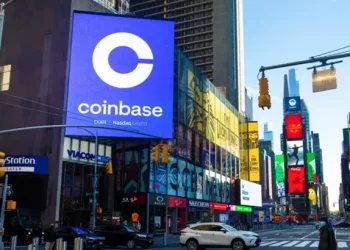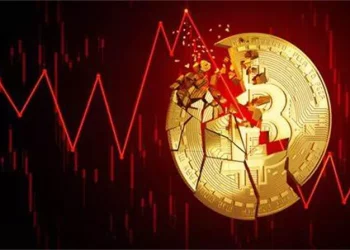Binance is one of the largest and most popular cryptocurrency exchanges in the world. When engaging in trading activities on Binance, understanding the costs involved is crucial for traders to make informed decisions and manage their trading strategies effectively. The trading costs on Binance mainly consist of two components: trading fees and other potential costs such as network fees for withdrawals and deposits.
Trading Fees on Binance
Maker and Taker Fees
Binance differentiates between maker and taker fees. A maker is a trader who places an order that adds liquidity to the order book. For example, if a trader places a limit order that does not immediately match with an existing order and waits to be filled, they are acting as a maker. The maker fee on Binance is relatively lower as an incentive for providing liquidity. As of 2024, the maker fee can range from around 0.02% to 0.1% depending on the trading volume and the type of user (regular user or a user with a higher trading volume and a VIP status).
A taker, on the other hand, is a trader who removes liquidity from the order book by immediately matching an existing order. Taker fees are generally higher. They typically range from about 0.04% to 0.2% under normal circumstances. For instance, if a trader uses a market order to buy or sell a cryptocurrency immediately at the best available price, they are a taker.
Fee Structure Based on Trading Volume
Binance employs a tiered fee structure. As a trader’s 30-day trading volume increases, the trading fees decrease. For example, a new user with a relatively low trading volume might be subject to the standard maker and taker fees mentioned above. However, a user with a trading volume of, say, over 100 million USDT in a 30-day period could see their maker fee reduced to as low as 0.01% and taker fee to around 0.02%. This encourages traders to increase their trading activity on the platform and rewards those with higher volumes.
VIP Program and Fee Reductions
Binance has a VIP program. Traders who meet certain criteria, such as maintaining a high trading volume and holding a significant amount of Binance Coin (BNB), can enjoy further fee reductions. BNB can be used to pay trading fees, and when used, traders get an additional discount. For example, if a VIP trader uses BNB to pay fees, they might get a 25% discount on the already reduced fees. This means that a taker fee that was supposed to be 0.1% could be reduced to 0.075% after the BNB discount.
Other Costs Associated with Trading on Binance
Withdrawal Fees
When withdrawing cryptocurrencies from Binance to an external wallet, there are withdrawal fees. These fees vary depending on the type of cryptocurrency. For Bitcoin (BTC), the withdrawal fee is typically around 0.0005 BTC per withdrawal. This fee is charged to cover the cost of processing the withdrawal on the Bitcoin network. Ethereum (ETH) withdrawals usually have a fee of around 0.005 ETH. The reason for these different withdrawal fees is related to the specific characteristics and costs of each blockchain network. For example, networks with higher congestion or more complex transaction processing requirements might have higher withdrawal fees.
Deposit Fees
In general, Binance does not charge deposit fees for most cryptocurrencies. However, there are some exceptions. For example, in some cases where a deposit requires an additional network service or verification process, a small fee might be charged. But compared to withdrawal fees, deposit fees are relatively rare and usually much lower.
Slippage Costs
Slippage is another factor that can affect the overall cost of a trade. Slippage occurs when the price at which an order is executed differs from the expected price. This can happen especially in volatile markets or when trading large volumes. For example, if a trader places a market order to buy a certain amount of a cryptocurrency, and the price moves rapidly between the time the order is placed and executed, the trader might end up buying at a higher price than anticipated. The extent of slippage depends on market conditions and the liquidity of the cryptocurrency being traded. In highly liquid markets, slippage is usually minimal, but in less liquid markets or during periods of extreme price fluctuations, slippage can be significant and add to the cost of the trade.
Examples of Calculating Trading Costs on Binance
Let’s assume a trader wants to buy 10,000 USDT worth of Bitcoin. If the trader is a regular user and places a market order (taker), and the current taker fee is 0.1%, the fee for this trade would be 10,000 * 0.001 = 10 USDT. If the trader had a higher trading volume and was eligible for a reduced taker fee of 0.05%, the fee would be 10,000 * 0.0005 = 5 USDT.
Now, if the trader decides to withdraw the purchased Bitcoin to an external wallet and the withdrawal fee is 0.0005 BTC. Assuming the price of Bitcoin is 50,000 USDT per BTC, the withdrawal fee in USDT would be 0.0005 * 50,000 = 25 USDT. So, the total cost of this trade including the trading fee and the withdrawal fee would be 10 + 25 = 35 USDT (in the case of the regular user with a 0.1% taker fee) or 5 + 25 = 30 USDT (in the case of the user with a 0.05% taker fee).
Strategies to Minimize Trading Costs on Binance
Use Limit Orders
By using limit orders instead of market orders, traders can act as makers and benefit from the lower maker fees. Limit orders allow traders to set a specific price at which they want to buy or sell a cryptocurrency. This gives them more control over the execution price and reduces the impact of taker fees. For example, if a trader believes that the price of a particular cryptocurrency will reach a certain level in the near future, they can place a limit order at that price and wait for it to be filled. This way, they not only save on trading fees but also avoid potential slippage costs associated with market orders.
Increase Trading Volume and Qualify for VIP Status
Traders should aim to increase their trading volume over time. This can be achieved by gradually increasing the size and frequency of their trades. By reaching the higher trading volume tiers and qualifying for VIP status, traders can enjoy significant fee reductions. Additionally, holding and using BNB to pay fees further amplifies the cost savings. For example, a trader who starts with a small trading volume and gradually builds it up to a level that qualifies for VIP 3 status can see a substantial decrease in their trading fees, which can have a significant impact on their overall trading profitability.
Monitor Market Conditions and Liquidity
Keeping an eye on market conditions and the liquidity of the cryptocurrencies being traded is essential. Traders should avoid trading during periods of high market volatility or low liquidity if possible. High volatility can lead to increased slippage, and low liquidity can make it more difficult to execute trades at a favorable price. For example, if a cryptocurrency has just been listed on Binance and has low trading volume and liquidity, it might be wise to wait until the market stabilizes and more participants enter the market before trading. This way, traders can minimize the potential costs associated with slippage and unfavorable price executions.
Conclusion
The cost of a trade on Binance is a combination of trading fees, withdrawal fees, potential deposit fees, and slippage costs. Understanding these costs and how they are calculated is vital for traders. By being aware of the fee structures, using appropriate trading strategies such as limit orders, increasing trading volume to qualify for VIP status, and monitoring market conditions, traders can effectively manage and minimize their trading costs. This, in turn, can enhance their trading profitability and overall experience on the Binance platform. As the cryptocurrency market continues to evolve, it is also important for traders to stay updated on any changes in Binance’s fee policies and trading conditions to adapt their strategies accordingly.
Related Topics:
















